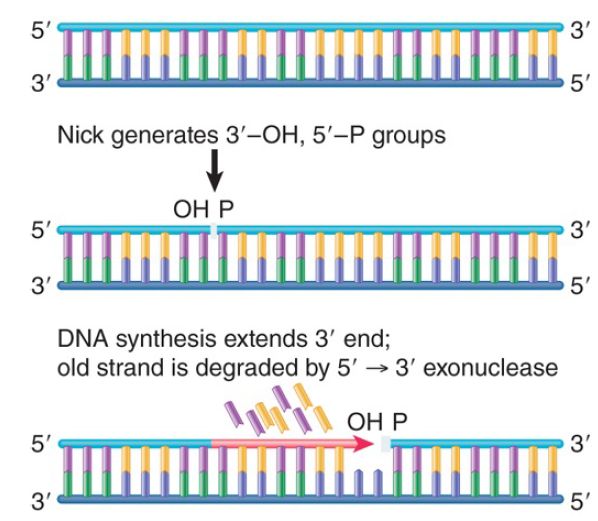

النبات

مواضيع عامة في علم النبات

الجذور - السيقان - الأوراق

النباتات الوعائية واللاوعائية

البذور (مغطاة البذور - عاريات البذور)

الطحالب

النباتات الطبية


الحيوان

مواضيع عامة في علم الحيوان

علم التشريح

التنوع الإحيائي

البايلوجيا الخلوية


الأحياء المجهرية

البكتيريا

الفطريات

الطفيليات

الفايروسات


علم الأمراض

الاورام

الامراض الوراثية

الامراض المناعية

الامراض المدارية

اضطرابات الدورة الدموية

مواضيع عامة في علم الامراض

الحشرات


التقانة الإحيائية

مواضيع عامة في التقانة الإحيائية


التقنية الحيوية المكروبية

التقنية الحيوية والميكروبات

الفعاليات الحيوية

وراثة الاحياء المجهرية

تصنيف الاحياء المجهرية

الاحياء المجهرية في الطبيعة

أيض الاجهاد

التقنية الحيوية والبيئة

التقنية الحيوية والطب

التقنية الحيوية والزراعة

التقنية الحيوية والصناعة

التقنية الحيوية والطاقة

البحار والطحالب الصغيرة

عزل البروتين

هندسة الجينات


التقنية الحياتية النانوية

مفاهيم التقنية الحيوية النانوية

التراكيب النانوية والمجاهر المستخدمة في رؤيتها

تصنيع وتخليق المواد النانوية

تطبيقات التقنية النانوية والحيوية النانوية

الرقائق والمتحسسات الحيوية

المصفوفات المجهرية وحاسوب الدنا

اللقاحات

البيئة والتلوث


علم الأجنة

اعضاء التكاثر وتشكل الاعراس

الاخصاب

التشطر

العصيبة وتشكل الجسيدات

تشكل اللواحق الجنينية

تكون المعيدة وظهور الطبقات الجنينية

مقدمة لعلم الاجنة


الأحياء الجزيئي

مواضيع عامة في الاحياء الجزيئي


علم وظائف الأعضاء


الغدد

مواضيع عامة في الغدد

الغدد الصم و هرموناتها

الجسم تحت السريري

الغدة النخامية

الغدة الكظرية

الغدة التناسلية

الغدة الدرقية والجار الدرقية

الغدة البنكرياسية

الغدة الصنوبرية

مواضيع عامة في علم وظائف الاعضاء

الخلية الحيوانية

الجهاز العصبي

أعضاء الحس

الجهاز العضلي

السوائل الجسمية

الجهاز الدوري والليمف

الجهاز التنفسي

الجهاز الهضمي

الجهاز البولي


المضادات الميكروبية

مواضيع عامة في المضادات الميكروبية

مضادات البكتيريا

مضادات الفطريات

مضادات الطفيليات

مضادات الفايروسات

علم الخلية

الوراثة

الأحياء العامة

المناعة

التحليلات المرضية

الكيمياء الحيوية

مواضيع متنوعة أخرى

الانزيمات
DNA Polymerases Have Various Nuclease Activities
المؤلف:
JOCELYN E. KREBS, ELLIOTT S. GOLDSTEIN and STEPHEN T. KILPATRICK
المصدر:
LEWIN’S GENES XII
الجزء والصفحة:
4-4-2021
2630
DNA Polymerases Have Various Nuclease Activities
KEY CONCEPT
-DNA polymerase I has a unique 5′–3′ exonuclease activity that can be combined with DNA synthesis to perform nick translation.
Replicases often have nuclease activities as well as the ability to synthesize DNA. A 3′–5′ exonuclease activity is typically used to excise bases that have been added to DNA incorrectly. This provides a “proofreading” error-control system .
The first DNA-synthesizing enzyme that researchers characterized was DNA polymerase I, which is a single polypeptide of 103 kD (kilodalton). The chain can be cleaved into two parts by proteolytic treatment. The larger cleavage product (68 kD) is called the Klenow fragment. It is used in synthetic reactions in vitro. It contains the polymerase and the proofreading 3′–5′ exonuclease activities. The active sites are approximately 30 Å apart in the protein, which indicates that there is spatial separation between adding a base and removing one.
The small fragment (35 kD) possesses a 5′–3′ exonucleolytic activity, which excises small groups of nucleotides, up to approximately 10 bases at a time. This activity is coordinated with the synthetic/proofreading activity. It provides DNA polymerase I with a unique ability to start replication in vitro at a nick in DNA. (No other DNA polymerase has this ability.) At a point where a phosphodiester bond has been broken in a double-stranded DNA, the enzyme extends the 3′–OH end. As the new segment of DNA is synthesized, it displaces the existing homologous strand in the duplex. The displaced strand is degraded by the 5′–3′ exonucleolytic activity of the enzyme.
FIGURE 1. illustrates this process of nick translation. The displaced strand is degraded by the 5′–3′ exonuclease activity of the enzyme. The properties of the DNA are unaltered, except that a segment of one strand has been replaced with newly synthesized material, and the position of the nick has been moved along the duplex. This is of great practical use; nick translation has been a major technique for introducing radioactively labeled nucleotides into DNA in vitro.

FIGURE 1. Nick translation replaces part of a preexisting strand of duplex DNA with newly synthesized material.
The coupled 5′–3′ synthetic/3′–5′ exonucleolytic action is used most extensively for filling in short single-stranded regions in doublestranded DNA. These regions arise during lagging strand DNA replication .
 الاكثر قراءة في مواضيع عامة في الاحياء الجزيئي
الاكثر قراءة في مواضيع عامة في الاحياء الجزيئي
 اخر الاخبار
اخر الاخبار
اخبار العتبة العباسية المقدسة

الآخبار الصحية















 قسم الشؤون الفكرية يصدر كتاباً يوثق تاريخ السدانة في العتبة العباسية المقدسة
قسم الشؤون الفكرية يصدر كتاباً يوثق تاريخ السدانة في العتبة العباسية المقدسة "المهمة".. إصدار قصصي يوثّق القصص الفائزة في مسابقة فتوى الدفاع المقدسة للقصة القصيرة
"المهمة".. إصدار قصصي يوثّق القصص الفائزة في مسابقة فتوى الدفاع المقدسة للقصة القصيرة (نوافذ).. إصدار أدبي يوثق القصص الفائزة في مسابقة الإمام العسكري (عليه السلام)
(نوافذ).. إصدار أدبي يوثق القصص الفائزة في مسابقة الإمام العسكري (عليه السلام)


















